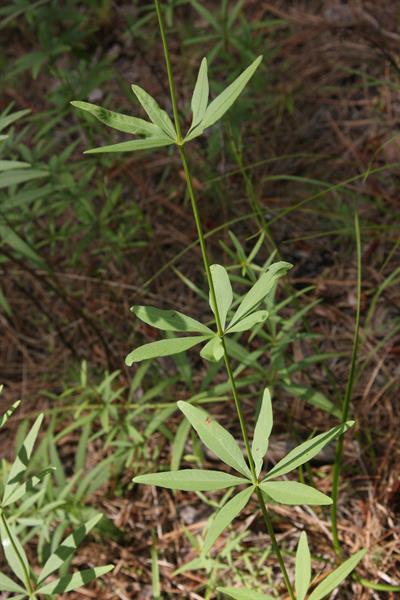
Origin/Endemic status: Endemic
Taxonomy Comments: How to treat the "Coreopsis major complex" (here including C. major, C. delphiniifolia, and C. verticillata) remains unclear. The group apparently includes diploids and a variety of allopolyploids and autopolyploids (at various ploidies) variously derived from components of C. major and C. verticillata. Sometimes recognized in C. major are two varieties: var. major (with leaf blades rather densely short-pubescent, outer phyllaries rather densely short-pubescent, middle leaflet of median leaves 10-30 mm wide, and leaflets herbaceous) and var. rigida (with leaf blades slightly short-pubescent to glabrous, outer phyllaries slightly short-pubescent to glabrous, middle leaflet of median leaves 5-10 (-12) mm wide, leaflets subcoriaceous and stiff). Variation and poor correlation of these features as stated and the presence of significant and apparently variation in other features requires additional study before a satisfying taxonomy can be presented.
Synonymy: = Fl7, FNA21, K1, K3, K4, NE, NY, Oh3, S, Tn, Va, WH3, Smith (1976); = Coreopsis rigida Nutt.; = n/a – Pa; > Coreopsis major Walter var. linearis Small; > Coreopsis major Walter var. major – C, F, G, RAB, SE1, W, Sherff & Alexander (1955); > Coreopsis major Walter var. rigida – C, F, SE1, Sherff & Alexander (1955); > Coreopsis major Walter var. stellata (Nutt.) B.L.Rob. – F, G, RAB, WV, Sherff & Alexander (1955)
Heliophily: 6
Hover over a shape, letter, icon, or arrow on the map for definition or see the legend.
 © Richard & Teresa Ware CC-BY-NC, permission granted to NCBG | Original Image ⭷
© Richard & Teresa Ware CC-BY-NC, permission granted to NCBG | Original Image ⭷ © Richard & Teresa Ware CC-BY-NC, permission granted to NCBG | Original Image ⭷
© Richard & Teresa Ware CC-BY-NC, permission granted to NCBG | Original Image ⭷ © Keith Bradley | Original Image ⭷
© Keith Bradley | Original Image ⭷ © Bruce A. Sorrie | Original Image ⭷
© Bruce A. Sorrie | Original Image ⭷ © Gary P. Fleming | Original Image ⭷
© Gary P. Fleming | Original Image ⭷Feedback
See something wrong or missing on about Coreopsis major? Let us know here: (Please include your name and email if at all complicated so we can clarify if needed.)
Cite as...